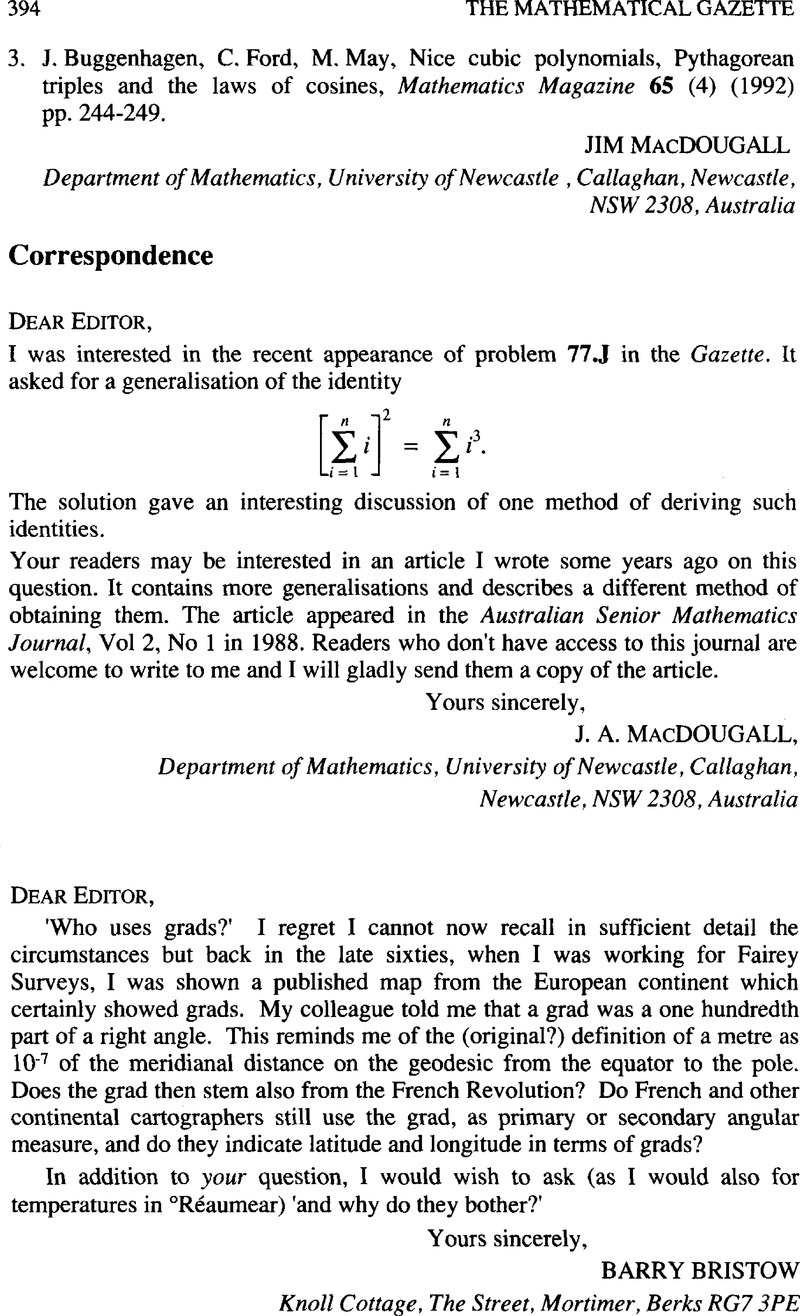No CrossRef data available.
Article contents
Correspondence
Published online by Cambridge University Press: 01 August 2016
Abstract
An abstract is not available for this content so a preview has been provided. As you have access to this content, a full PDF is available via the ‘Save PDF’ action button.

- Type
- Letter
- Information
- Copyright
- Copyright © The Mathematical Association 1995
References
1.
Althoen, S.C., King, L. & Schilling, K., How long is a game of snakes and ladders?
Math. Gaz. 77 (March 1993) pp. 71–76.Google Scholar
2.
Fawdry, Marguerite, Chinese Childhood. Pollock’s Toy Theatres. London, 1977, p. 183.Google Scholar
3.
Tatsuzo, Nasgao, Shina Minzoku-shi [Manners and Customs of the Chinese], Tokyo, 1940–1942, perhaps vol. 2, p. 707.Google Scholar
4.
Bell, Robbie and Cornelius, Michael, Board Games Round the World
Cambridge Univ. Press, 1988. Snakes and Ladders and the Chinese Promotion Game, pp. 65–67.Google Scholar
5.
Topsfield, Andrew, The Indian game of snakes and ladders, Artibus Asiae
46: 3 (1985) pp. 203–214 + 14 figures.Google Scholar
6.
Love, Brian
Play The Game
Michael Joseph, London, 1978. Snakes & Ladders 1, pp. 22–23.Google Scholar
7.
Daykin, D.E., Jeacocke, J.E. & Neal, D.G., Markov chains and snakes and ladders. Math. Gaz. 51 (December 1967) pp. 313–317.Google Scholar


